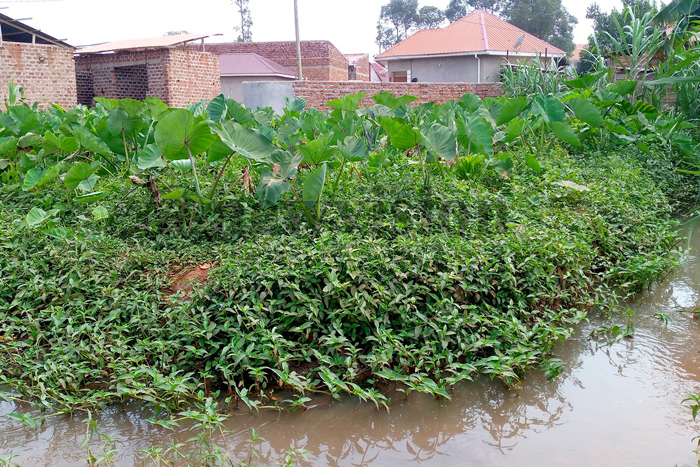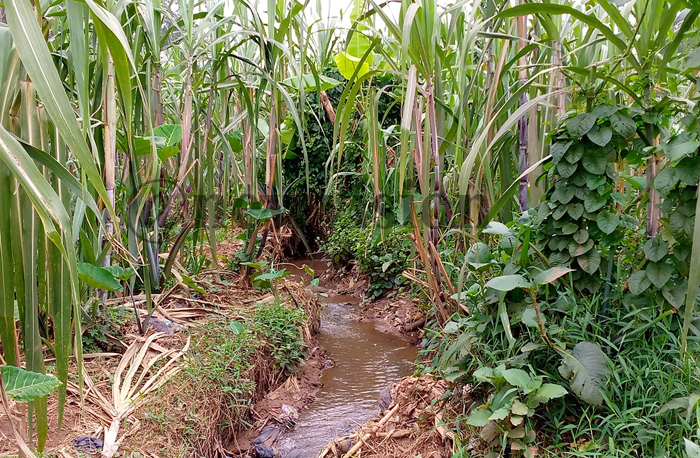Crops grown in wetlands not safe for human consumption
Most food crops grown in urban wetlands absorb several pollutants. This is especially so with sweet potatoes and cocoyams.
A drive from Matugga-Semuto road, many farmers have occupied wetlands. At Ssanga from a distance, it looks like a football pitch. But as you get closer, it is a well land pitch of vegetables. Some people are earning handsomely from growing vegetables on the water-logged piece of land.
Matugga, Ssanga, Kabunza, Kilyowa, and Nasse all in Wakiso district are some of the areas which have wetlands. However, the only piece of land still intact after the rest of the swamps were encroached on by residential houses is utilised for vegetable cultivation.
The biggest farm is located at Ssanga it is a field full of money; all year round. This is money in form of vegetables. Daily, this farm, in the centre of a slum sells to traders from Kawempe, Kalerwe, Mpererewe, and Matugga markets among other areas.
Most food crops grown in urban wetlands absorb several pollutants. This is especially so with sweet potatoes and cocoyams.
James Kavulu, a resident of Ssanga says he is worried about the factories that are coming up. "We do not know what kind of factories they are, but there are so many chemicals that come down to this valley when it rains, yet smoke always from comes from them", he says.

He also says that he is worried about the young women and children who go to dig in the swamps without protective gear like gumboots. Kavulu also believes swamps also carry sewage from neighbouring homes because many residential houses have come up.
"People have become too desperate that they no longer care about the dangers of reclaiming the swamp," Kavulu adds.
Henry Ssekyewa, an agronomist says experts have to research the foods and vegetables grown in swampy places. Ugandans need serious attention to the possible effects of lead and cadmium on human health.
Crops like cocoyams and sweet potatoes contain carbohydrates, if there are grown in wetlands, they can take up lead from burning leaded petrol and flaking leaded house paints most especially those which are grown near factories or industries,"Ssekyewa says.
"We all know that foods like yams when they grow, their tubers absorb chemicals, most notably lead, copper, ammonium, and orthophosphate. Most especially yams in Kampala's wetlands are contaminated with deadly chemicals from industries", Ssekyewa explains.
Statistics
According to statistics, 1.3 million people in Uganda are getting affected annually by unsafe food, and 10% of the population falling sick after eating contaminated food. 420,000 people including 125,000 children under five die due to the consumption of unsafe food.
Jane Nalunga, the executive director of Southern and Eastern Africa Trade Information and Negotiations Institute (SEATINI -Uganda) says a recent report indicated that 80% of the food products especially grains are contaminated.

"That is the extent of the problem, for the last four years, our exports have been facing challenges of rejection by the European Union and Neighboring Kenya, just because they are not of quality," Nalunga said.
How farmers are benefiting
With the availability of water, vegetables can be produced all year from swampy areas. Vegetables like onions take an average of three months to mature.
Because we have water, we produce them at any time of the year, says Allan Makanga a resident of Kisaasi and he grows yams.
"Our customers have never complained that we do not have goods for them", he says.
The farmers get seeds from Kampala seeds shops. Some wetlands are owned by landlords and according to farmers, they hire out the pieces to them at a small fee. "The fee depends on the size of the land one uses", Makanga says.
Many scientists have advised Ugandans to take extra caution when buying food, to avoid consuming foods that are contaminated with chemicals such as pesticides.
According to food experts, farmers and food dealers have taken advantage of Ugandans who don't know, farmers who spray crops with pesticides and yet they grow their products in such areas have not helped Ugandans to save their lives. Such crops are not worthy of human consumption.
"There are several hazards such as metals, chemicals, and pesticides in food that can lead to death. Most of the food especially grains are contaminated with aflatoxin which are very dangerous and can cause cancer," Professor Archileo Kaaya, a food expert at the Department of Food Technology and Nutrition Makerere University, says.
Kaaya noted that most of the foods including fresh vegetables, fruits, and dairy products on the market carry dangerous chemicals which they get during the spraying process.
Challenges
Ronald Lotet, a senior environmental officer says many farmers dig channels in the wetlands to grow crops and this affects water flow.
According to Lotet the biggest challenge the fight against encroachment faces is the lack of support from local leaders and limited personnel to monitor the environment.
Lotet also advises people not to consume whatever is sold to them because it is cheap, but they have to mind about their health. Most of these chemicals cause cancer whose treatment is very expensive.